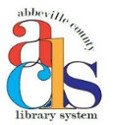Reviews
School Library Journal
(c) Copyright Library Journals LLC, a wholly owned subsidiary of Media Source, Inc. No redistribution permitted.
Gr 2-5-Based largely on the New Testament book of Acts, this overview recounts Saint Paul's sudden transformation from a devout Jew who zealously persecuted followers of Jesus into an ardent apostle. During his journeys to preach about Jesus, Paul faced dangerous opposition from religious leaders but convinced many Jews and non-Jews to become Christians. Among the dramatic events included in the engaging text are Paul's imprisonment, stoning, shipwreck, snakebite, and escape over city walls. For the most part, Self remains true to biblical accounts. Curiously, he expands Paul's interactions with a wealthy woman named Lydia, creating a conversation between them and some pronouncements of her own. Some sections from Paul's letters are incorporated in the text, but his importance to the formation of the early Christian church and his ongoing influence on its theology are never explicitly explained. However, the book's major drawback lies in its disappointing illustrations, which resemble those found on uninspiring Sunday school leaflets. Muddy colors, stiff poses, and unattractive faces will discourage children from reading this biographical account.-Kathy Piehl, Minnesota State University, Mankato (c) Copyright 2010. Library Journals LLC, a wholly owned subsidiary of Media Source, Inc. No redistribution permitted.
Kirkus
Copyright © Kirkus Reviews, used with permission.
What we know of the complicated life of this early Christian missionary is related through several books in the New Testament. In this biographical compilation, the author uses all the various books of the Bible related to Paul to create a linear narrative of his life, presented in short chapters with abundant spot and full-page illustrations rendered by Cockroft in a muted but pleasing style. A map on the front endpapers traces Paul's journeys throughout the Middle East and on to Greece and Italy. A final page provides some key facts about Paul, but this chart should have been placed at the front of the volume to aid readers' understanding of the main text. Paul's arguably most famous wordsfrom I Corinthiansserve as the conclusion to the final chapter, but there is no clear reference to the specific chapter and verse. The most glaring omission is the lack of a chart of the Bible books that are attributed to Paul; only a vague reference indicates that Paul's letters are found in the New Testament. (Religion. 8-12) Copyright Kirkus Reviews, used with permission.





